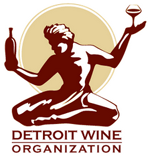It’s finally Spring (at least until that last blast of winter hits around the first week in April)! You can see it. You can feel it. But most of all, you can smell it. It smells alive, new… it smells like “Spring”. Everyone has their own version of what Spring smells like, and mine is probably different from yours, but we all know when it’s happening because our olfactory senses remember it from the last time it happened. It’s called sensory memory. Our sense of smell is one of our oldest and most primal senses. Research has shown that our olfactory senses allow us to identify food, mates and predators, as well as providing us with sensory pleasure (the aroma of flowers or perfume) and warning us of danger (i.e. spoiled food, chemical dangers). This primary means of communication with our environment is also one of the main ways we learn to understand and appreciate varieties in wine.
There are a number of tasting events happening in the next month or so. In addition to our Wine Down Wednesday on March 31 at Sangria and our big After Glow tasting at Schoolcraft College on May 15, we are also participating in a tasting of 70-80 new wines in the Detroit Wine Market at Mon Jin Lau on April 5 and a charity tasting for the Miracle League of Southfield on April 24. Each of these events will allow you an opportunity to taste many varieties of wine and, in order to effectively evaluate and compare the wines you taste, you need to practice your smelling techniques.
Sounds weird, I know, practicing something you do so naturally, but smelling wine is a very important part of wine tasting. The sense of smell and the sense of taste are so closely intertwined that one cannot exist without the other, so your nose can tell you a great deal about a wine even before you taste it. And the first few sniffs are the most important – before your olfactory senses are fatigued. You will identify aromas in the wine that are related to aromas with which you are already familiar – flowers, fruits, vegetables, etc, (which is why what you smell may be different from what your friend smells in the same wine – you have different olfactory memories and reference points). That doesn’t mean the winemaker threw some geraniums or leather into the wine while it was fermenting – it means the essence of the grapes and/or the winemaking techniques have generated scents that you can relate to others in your environment.So, pour yourself some wine and let’s experiment. Hint: if you’re at work while you’re reading this then just follow along and do the experiment later (wouldn’t want anyone getting fired or anything…).
Swirl the wine around in the glass – this is a way to release the aromas in the wine by spreading it around the surface area of the glass. If your glass is tapered toward the top it will focus the aromas toward your nose, rather than letting them escape into the air.
Put your nose in and take a quick sniff.
First identify the major category of smells – is it Floral? Fruity? Vegetative or Herbaceous? Nutty? Caramelized? Spicy? Woody? Earthy? Chemical? If that’s as far as you get on your initial try, that’s fine. The more you test your senses, the better you’ll get at identifying the aromas, but start broad and then try to narrow to something more specific
Take another sniff and try to get more specific with your analysis. If it’s a fruity scent, is it citrusy or more of a tree-fruit or tropical fruit kind of smell? If it’s a tree-fruit smell, is it like apples, pears, peaches or cherries? If it’s a nutty or caramel type smell, is it more like walnuts, honey, chocolate or butter?
As a last step, explore the physical characteristics in your nose – a bitter sensation implies tannin in the wine, a burning sensation in the back of the nose implies alcohol, and salivation implies acidity.
Practicing your aroma and bouquet identification techniques will ultimately help you identify the best wines before you even taste them. I know it’s tempting to jump right into that first sip, but smelling really is one of the most important steps in “tasting” wine vs. “drinking” wine. Now -go practice at one of the events listed below!
Tidbits to Amaze and Delight Your Friends
The scent of a wine depends on a number of factors, including the grape varietal, the wine’s age and composition, the region where it was made and how it was aged. Scents associated with the word “aroma” are generally those related with the grape varietal and they include the fruity, vegetative, floral and spicy scents you may detect in your wine. Varietals have characteristic aromas associated with them, so eventually, after much careful practice and tasting of many wines :>), you will be able to identify a “Merlot” because it smells like a “Merlot”. Scents that are more nutty, woody, earthy or caramelized are generally a result of the winemaking technique and aging processes during and after fermentation. These are often referred to as the wine’s “bouquet”. Finally, chemical or microbiological smells like diesel fuel, sulfur, vinegar, wet dog (yes, wet dog), yogurt and sweat are generally considered “off-odors” (gee, I wonder why).
Jevon is a board member


Leave A Comment